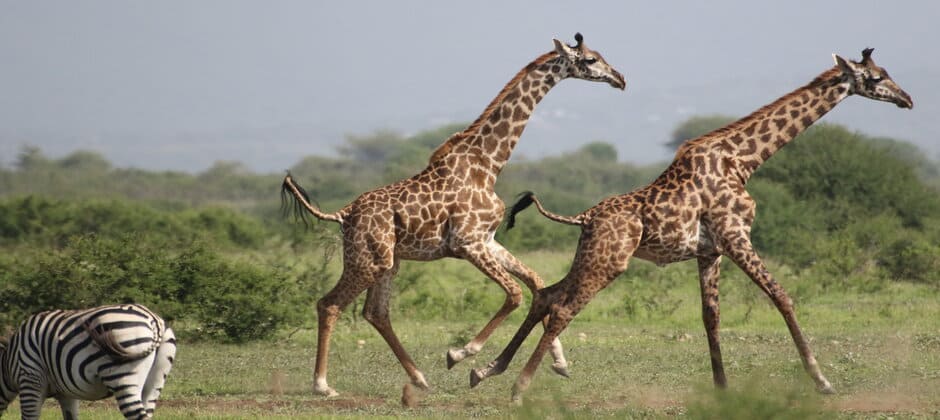Share this article
Why adolescent giraffes ditch their initial social group
Adolescent giraffes keen on leaving their mother’s roost don’t always disperse far and wide in search of mating opportunities. In fact, some stay put and just switch social communities in the same geographic location.
For nearly a decade, TWS member Monica Bond, the principal scientist with Wild Nature Institute, a nonprofit focused on protecting nature and biodiversity through science, and a research associate at the University of Zurich, has been working to understand more about the social organization of Masai giraffes (Giraffa camelopardalis tippelskirchi) in northern Tanzania.
She and her colleagues recently discovered that giraffes form complex social communities that often overlap geographically—the members of different social communities don’t associate with each other even when they are often seen in the same places.
In a new study published recently in the Journal of Animal Ecology, Bond and her co-authors discovered that adolescent giraffes sometimes switch their social communities when it’s time to find a mate, even if they’re not dispersing very far. She and her co-authors followed the dispersal of 67 male and 70 female giraffe calves over 7 years in an unfenced 2,200 square-kilometer area of northern Tanzania.
As predicted, they found that males dispersed far more often than females.
Most of the males dispersed to different locations, but at first glance, some males appeared to stay put. It was only when Bond and her co-authors took a closer look at behavior and social relations that they realized something else was happening with these males.
The researchers have been following these giraffes for years, identifying different individuals based on their unique spot patterns. In the previous research, they had determined which individuals were associated with which social group. When the team took these social communities into account, they discovered that many of the males that didn’t disperse that far physically still dispersed socially. They ditched their family for another group.
Bond said this is likely because the males are reaching sexual maturity and looking for unrelated females to mate with but find it safer to stay in familiar territory.
Most females, on the other hand, tend to keep the same social relationships they had since birth.
“Females mostly didn’t disperse, and of those that did disperse, a lot of them stayed in the social communities of their birth,” Bond said.
These social relationships help female giraffes raise their own offspring, as female giraffe communities will often watch each other’s calves while the mother goes off in search of water or better quality food. “They have babysitters,” she said. Having large communities of females also helps them avoid harassment from males.
But the researchers found that some female adolescents did leave their relatives. “Not all females will stick with the same social communities that they were born into,” Bond said.
The researchers aren’t completely sure why. Bond speculated that these females may be less socially connected than others. Another possibility that they disperse when there may not be enough quality food or water around to support many more females in a large group.
Bond said that this is one of the first studies that show how dispersal works in wildlife that have dynamic groups that merge and split frequently throughout the day. It’s possible that this social dispersal is also found in other giraffe species or subspecies have similar social dynamics, as well as other species of ungulates.
The discovery about dispersal is also important to better understand the way that genes flow through the population.
“We don’t know anything about male mating success,” she said. These kinds of studies could help researchers determine the strategies that males employ to increase their mating success.
Header Image: A subadult male and an adult female giraffe in northern Tanzania. Credit: Derek Lee/Wild Nature Institute








